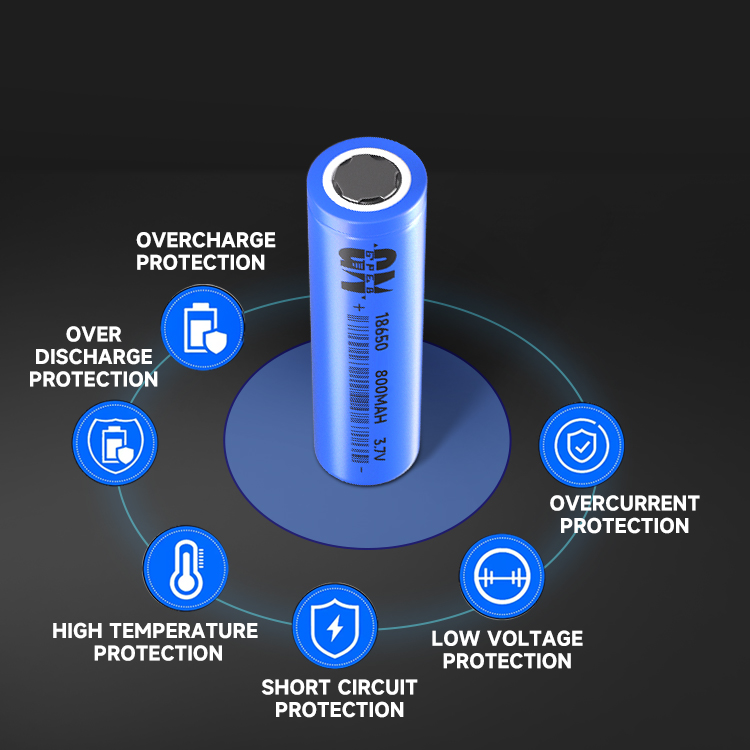

In order to avoid thermal runaway of lithium-ion batteries during the extrusion test and improve the safety of lithium-ion batteries, it is necessary to conduct in-depth research on the mechanism of thermal runaway of lithium-ion batteries during the extrusion test, so as to conduct further research on lithium-ion batteries. Targeted safety design to improve the safety of lithium-ion batteries in extrusion tests.
With the rapid development of the electric vehicle industry, lithium-ion batteries are widely used in the field of power batteries due to their advantages of high energy density, no memory effect and high safety. Due to the particularity of electric vehicles, higher requirements are placed on the safety of power batteries. For example, when an electric vehicle encounters a safety accident such as a collision, the power battery must not catch fire or explode to ensure the safety of drivers and passengers. Therefore, the power battery safety test experiments include extrusion, acupuncture and other tests involving the safety performance of lithium-ion batteries under extreme abuse conditions. Whether it can pass these stringent safety tests is the key to evaluating a lithium-ion battery. The ultimate standard in battery safety.
In the extrusion test, the lithium-ion battery shell first deforms, and then begins to squeeze the battery core. Since the separator prepared by the current dry stretching process has low strength in the transverse and diagonal directions, the battery core When the deformation reaches a certain level, the transverse direction of the separator will break first, causing direct contact between the positive and negative electrodes of the lithium-ion battery, causing a short circuit, instantly releasing a large amount of heat, causing a decomposition reaction of the negative SEI film, positive active material and electrolyte. This causes the lithium-ion battery to undergo thermal runaway, which ultimately causes the lithium-ion battery to catch fire and explode.
In order to avoid thermal runaway of lithium-ion batteries during the extrusion test and improve the safety of lithium-ion batteries, it is necessary to conduct in-depth research on the mechanism of thermal runaway of lithium-ion batteries during the extrusion test, so as to conduct further research on lithium-ion batteries. Targeted safety design to improve the safety of lithium-ion batteries in extrusion tests. Let’s take a look at the latest research results from the Massachusetts Institute of Technology in the United States.
Juner Zhu and others from the Massachusetts Institute of Technology in the United States used 18650 batteries to study the mechanism of thermal runaway of lithium-ion batteries during axial extrusion, and conducted simulation analysis using a finite element analysis model. This model restored different The analysis results of the impact of axial pressure on lithium-ion batteries were verified by CT scans. The simulation analysis found two reasons that can explain the short circuit of lithium-ion batteries during the extrusion test.
Since 18650 batteries in power battery packs are generally assembled vertically, axial extrusion is the main cause of lithium-ion battery deformation when the battery pack is dropped, so JunerZhu mainly studied the battery deformation under axial pressure. The mechanism that causes short circuit in lithium-ion batteries. Some traditional models assume that the interior of the lithium-ion battery is a uniform whole, so they cannot accurately predict the test results when predicting the axial compression test of the 18650 battery. This is mainly due to the special structure of the lithium-ion battery cell, resulting in the The upper and lower parts of the core are not completely consistent. At the same time, due to the unique structure of the lithium-ion battery upper cover (that is, the positive electrode), when the lithium-ion battery is subjected to axial pressure, the lithium-ion battery may be damaged before an internal short circuit occurs. A short circuit has occurred.

Popular recommendation
902030 lipo battery.18650 lithium battery PACK process quality characteristics and welding precautio
2023-10-09AG1 battery!Optimistic about the performance of lithium battery materials, confirming growth and new
2023-10-08CR2032 button cell.In terms of battery core technology, BYD beats Tesla?
2023-10-08Characteristics of lithium battery separator
2022-11-2318650 battery 3500mah.Do you know the basic impact of fast charging on lithium-ion batteries?
2023-10-08401030 lipo battery.A design based on a simple battery automatic constant current charging circuit
2023-10-0818650 lithium-ion battery.Introduction to new battery technology after lithium-ion rechargeable batt
2023-10-08AG Coin battery Common type
2022-06-1818650 battery 1800mah.Four charging methods for 18650 lithium battery
2023-10-13lifepo4 battery calb 200ah 3.2v.210mAh/g! The company breaks through the core technology of high-nic
2023-10-08602535 polymer battery.Mater. Yu Jiaguo from Wuhan Institute of Technology. Today: Research progress
2023-10-0818650 2200mah battery.Queensland develops graphene aluminum-ion battery with ultra-fast charging spe
2023-10-08